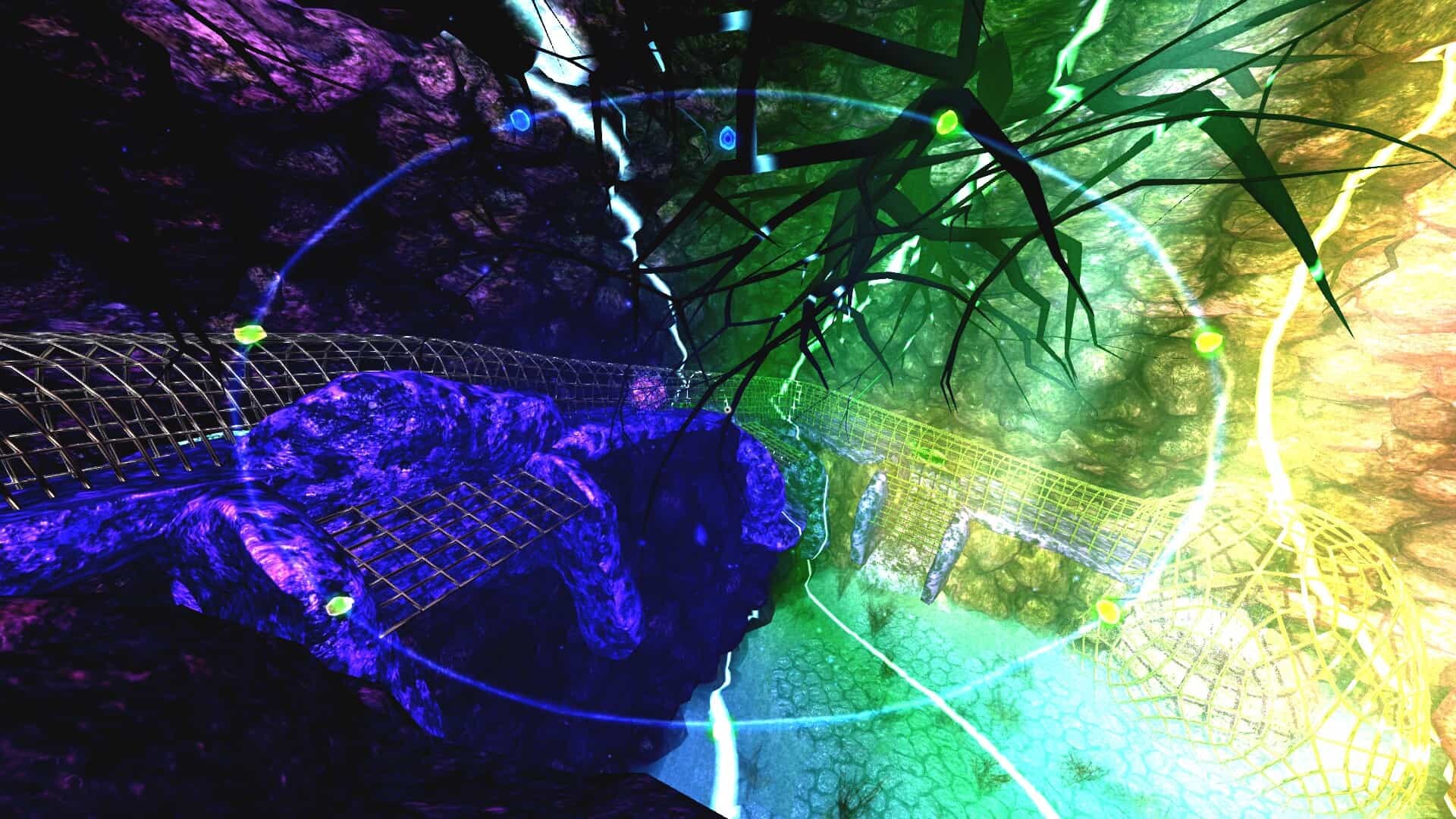Clinically Dead by Mogila Games
Clinically Dead from solo developer Paweł Mogiła represents “four years of solo work,” and is a 3D puzzle with a fairly unique conceit: it takes place within its protagonist’s mind during his final 30 seconds. As the brain shuts down, the mind’s perception of time goes really weird, a conceit a bit like Inception, creating a reason for all sorts of time-based puzzles.

Dead Reckoning
This is all explained after a brief but unsettling introduction about our protagonist dying in a hospital room. Our narrator, a floating head representing our “inner voice,” goes on to explain that we are experiencing the last 30 seconds of life, but in order to die peacefully world of neon caves, we need to collect “time crystals” to move time forward.
Because time behaves differently within the dying mind, we’ll also need to learn how to “move” time, forward and backward, using the “time field.” Time and space, the seemingly endless – and poorly translated – exposition continues, is represented as a spectrum, from the “high time value” of red to the “low time” of blue.
So just like Inception, but making even less sense. Got it.

What does any of this mean, for you – the gamer – practically speaking? Well, apart from the environment – psychedelic and crystal-strewn caverns, a vision of near-death that owes more to Timothy Leary than Dante Alighieri – Clinically Dead basically boils down to first-person 3D platform puzzles.
Technicolor but Clinical
Some levels take the idea of “time and space” as a spectrum literally: moving from red to blue areas and in between moves “time,” which basically means platforms move up and down, while others require the collection of time crystals so that you can move time forward and back manually, which in practice also usually means moving platforms around.
The more satisfying levels employ both at once and throw in some other old favorites, like pressure plate and marble run puzzles to boot. My favorite bits also bring in stealth for added fun: creepy monsters that look a bit like classic alien “grays” stalk you, but you can hide in the shadows of platforms, so be sure to “move time” to keep yourself concealed.

Dead to Rights
There’s as much confusion as there is satisfaction here, though. Some puzzle mechanics don’t get quite explained until after you’ve used them, which is really frustrating if you’re not already a natural at this sort of thing, and the whole “near death experience” concept doesn’t seem as well-integrated with the puzzles as – for example – the integration of the puzzles and musical elements in Fract OSC.
That said, part of the fun in a game like Clinically Dead is figuring things out for yourself, and the environments really are stunning, if occasionally a bit crude.
Despite the high concept, this one is really about the puzzles, not the story, so don’t be fooled by the seemingly relaxing psychedelia; Clinically Dead is about melting your mind mechanically, not tripping out over the colors.
Clinically Dead is available via Steam.
[xrr rating=”3/5″]
Watch the official trailer for Clinically Dead below:





